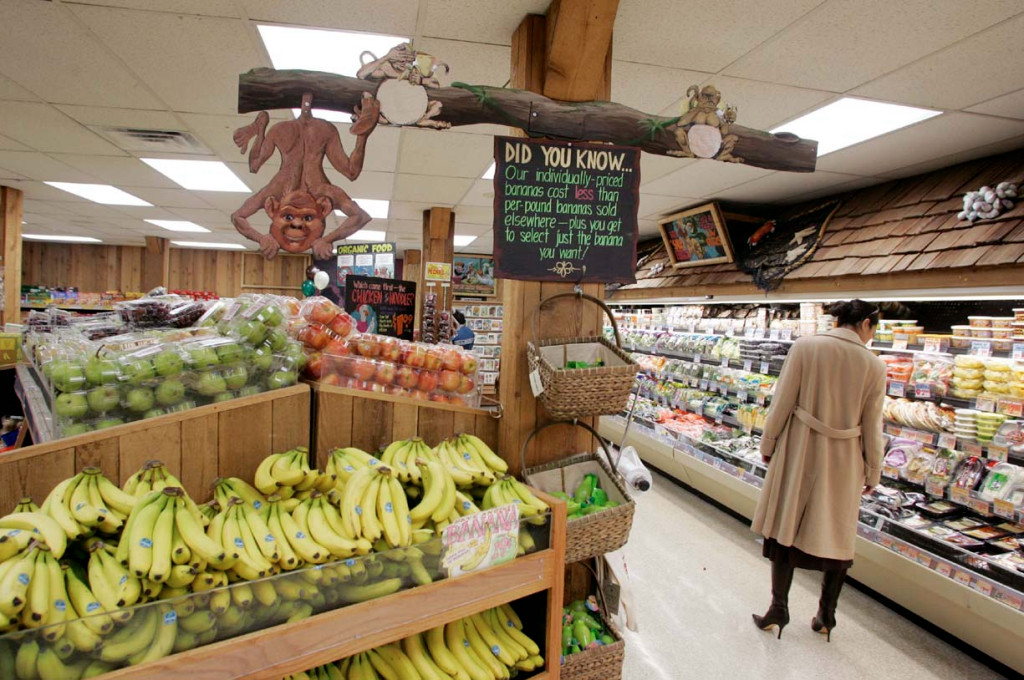For years, I’ve told children, newspaper editors and other credulous people that I’m the Joe of Trader Joe’s. That’s a lie. But it’s true that the store and I grew up in the very same neighborhood.
As a Pasadena child, I would ride my bike two blocks from my house to the Trader Joe’s on Arroyo Parkway — the original store, opened by San Diego native and Stanford alum Joe Coulombe in 1967.
Back then, it seemed like a cluttered and unremarkable place, mostly good for snacks. So I’ve watched its growth — to 480-plus stores across 41 states — with the wonder with which you might follow a neighborhood boy’s transformation into a movie star.
In its success, Trader Joe’s has offered a rebuttal to the conventional wisdom about our state’s greatness. While our leaders say California is great because of its size, diversity, technology and limitless choices, Trader Joe’s has achieved greatness with a narrow vision that eschews technology (no online sales) and limits our choices. Many grocery stores offer 50,000 items from all sorts of companies and brands, but Trader Joe’s typically has fewer than 5,000 items, most under its very own brand.
If you really want to make it big in California, it may be better to stay small.
It also helps to have it both ways. Trader Joe’s expertly exploits two contradictory California fantasies: that we can be both cheapskates and snobs at the very same time. Californians are desperate to live better than other Americans. But very few of us can really afford to do it. Trader Joe’s is beloved because — with its chocolates, its cheeses, its wines, its holiday selection — it allows us pleasures at reasonable prices.
At a local Rotary Club, I once heard Joe Coulombe explain his creation this way: Having everything is nice, but it’s even nicer to make sure everything you’ve got is actually worth having. Coulombe also said Trader Joe’s real secrets are its employees, who are friendly and knowledgeable because they stick around, and they stick around because they receive good benefits and pay.
The company, unlike a startup, has grown slowly. It didn’t expand outside California until the 1990s. Expansion has been made possible by international investment. The family behind Aldi, the German grocery chain, bought Trader Joe’s decades ago, but hasn’t changed its essence. And so, my favorite Trader Joe’s feature, the no-questions-asked return policy, remains very much in effect.
Of course, Trader Joe’s is far from perfect. It has encountered labor problems as it moved east, faced criticism about the environmental impact of its packaging, and is infamous for small, traffic-snarled parking lots.
But the biggest complaints about Trader Joe’s come from the places that don’t yet have it. People in Canada, Australia and Europe have campaigned unsuccessfully for the company to open locations. A Vancouver entrepreneur established a Pirate Joe’s store, with items carried over from Washington state, before legal pressure forced its closing.
But no place demonstrates the appeal of the Trader Joe’s idea more than Hawaii, with a twist of unrequited love. Surveys suggest that Trader Joe’s is one of Hawaii’s favorite brands, but there is no Trader Joe’s store on the islands. The company can’t make its lower-cost, short-supply-chain model work so far from the mainland.
Still, Trader Joe’s food is ubiquitous there, because of unauthorized online resales or residents who load up suitcases with items purchased at stores near mainland airports.
On a recent trip to Honolulu, it took me an hour to make contact with a local Trader Joe’s smuggling ring. I soon found myself walking through a convenience store and into a small storage space, which was full of butter, nuts and other Trader Joe’s goodies. I bought a pack of Dark Chocolate Sunflower Seed Butter Cups, at a $1 mark-up.
They tasted just like home.
Joe Mathews writes the Connecting California column for Zócalo Public Square.










